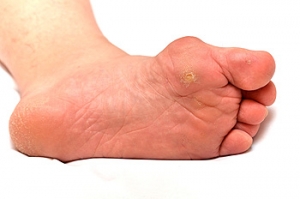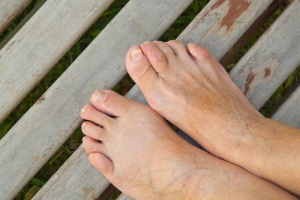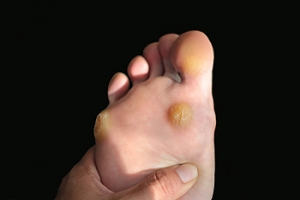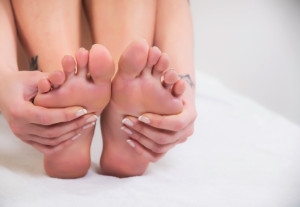Featured Articles
Super User
Specific Foods Can Be Linked to Gout Attacks

Gout is defined as a foot condition that can cause severe pain and discomfort. It often targets the joints in the big toe and is caused by an excess level of uric acid. Eating foods that have high levels of purines may cause uric acid levels to rise and convert to crystals that lodge in the joints of the toes. There are trigger foods that can be avoided in patients who have gout, and this may reduce the number of painful gout attacks. Red meat can fall into this category, and frequently eating this food can increase the chances of getting gout. Many people think honey is an alternative to processed sugar, however, it also contains a large amount of uric acid. There are certain types of seafood that have high levels of purines. These can consist of shellfish, sardines, anchovies, and scallops, and gout patients are advised to eat infrequent or small amounts of these types of seafood. If you would like more information about what type of foods can trigger gout attacks, it is suggested that you confer with a podiatrist who can provide you with healthy food choices to choose from.
Gout is a painful condition that can be treated. If you are seeking treatment, contact Dr. Dean D. Hinners from Illinois. Our doctor will treat your foot and ankle needs.
What Is Gout?
Gout is a form of arthritis that is characterized by sudden, severe attacks of pain, redness, and tenderness in the joints. The condition usually affects the joint at the base of the big toe. A gout attack can occur at any random time, such as the middle of the night while you are asleep.
Symptoms
- Intense Joint Pain - Usually around the large joint of your big toe, and it most severe within the first four to twelve hours
- Lingering Discomfort - Joint discomfort may last from a few days to a few weeks
- Inflammation and Redness -Affected joints may become swollen, tender, warm and red
- Limited Range of Motion - May experience a decrease in joint mobility
Risk Factors
- Genetics - If family members have gout, you’re more likely to have it
- Medications - Diuretic medications can raise uric acid levels
- Gender/Age - Gout is more common in men until the age of 60. It is believed that estrogen protects women until that point
- Diet - Eating red meat and shellfish increases your risk
- Alcohol - Having more than two alcoholic drinks per day increases your risk
- Obesity - Obese people are at a higher risk for gout
Prior to visiting your podiatrist to receive treatment for gout, there are a few things you should do beforehand. If you have gout you should write down your symptoms--including when they started and how often you experience them, important medical information you may have, and any questions you may have. Writing down these three things will help your podiatrist in assessing your specific situation so that he or she may provide the best route of treatment for you.
If you have any questions, please feel free to contact one of our offices located in Metropolis and Eldorado, IL . We offer the newest diagnostic and treatment technologies for all your foot care needs.
How to Tell If You’ve Developed Gout
 Gout, an inflammatory form of arthritis, can be recognized by observing extreme swelling and redness on the side of one’s big toe. Other common symptoms may include a tender sensation when the affected area is touched, as well as a sharp, burning, or hot pain on the side of the big toe. Gout can be caused by high levels of uric acid and poor blood circulation. This condition is often inherited, and is common among diabetic patients, people who have high blood pressure or who are obese. Gout can be managed and treated by drinking plenty of water, icing the affected area, changing your diet to reduce purine levels, and by wearing compression socks. For a proper diagnosis and recommended plan for treatment, it’s suggested thank you consult with a podiatrist.
Gout, an inflammatory form of arthritis, can be recognized by observing extreme swelling and redness on the side of one’s big toe. Other common symptoms may include a tender sensation when the affected area is touched, as well as a sharp, burning, or hot pain on the side of the big toe. Gout can be caused by high levels of uric acid and poor blood circulation. This condition is often inherited, and is common among diabetic patients, people who have high blood pressure or who are obese. Gout can be managed and treated by drinking plenty of water, icing the affected area, changing your diet to reduce purine levels, and by wearing compression socks. For a proper diagnosis and recommended plan for treatment, it’s suggested thank you consult with a podiatrist.
Gout is a foot condition that requires certain treatment and care. If you are seeking treatment, contact Dr. Dean D. Hinners from Illinois. Our doctor will treat your foot and ankle needs.
What Is Gout?
Gout is a type of arthritis caused by a buildup of uric acid in the bloodstream. It often develops in the foot, especially the big toe area, although it can manifest in other parts of the body as well. Gout can make walking and standing very painful and is especially common in diabetics and the obese.
People typically get gout because of a poor diet. Genetic predisposition is also a factor. The children of parents who have had gout frequently have a chance of developing it themselves.
Gout can easily be identified by redness and inflammation of the big toe and the surrounding areas of the foot. Other symptoms include extreme fatigue, joint pain, and running high fevers. Sometimes corticosteroid drugs can be prescribed to treat gout, but the best way to combat this disease is to get more exercise and eat a better diet.
If you have any questions please feel free to contact one of our offices located in Metropolis and Eldorado, IL . We offer the newest diagnostic and treatment technologies for all your foot and ankle needs.
Differences Between Hammertoe and Claw Toe
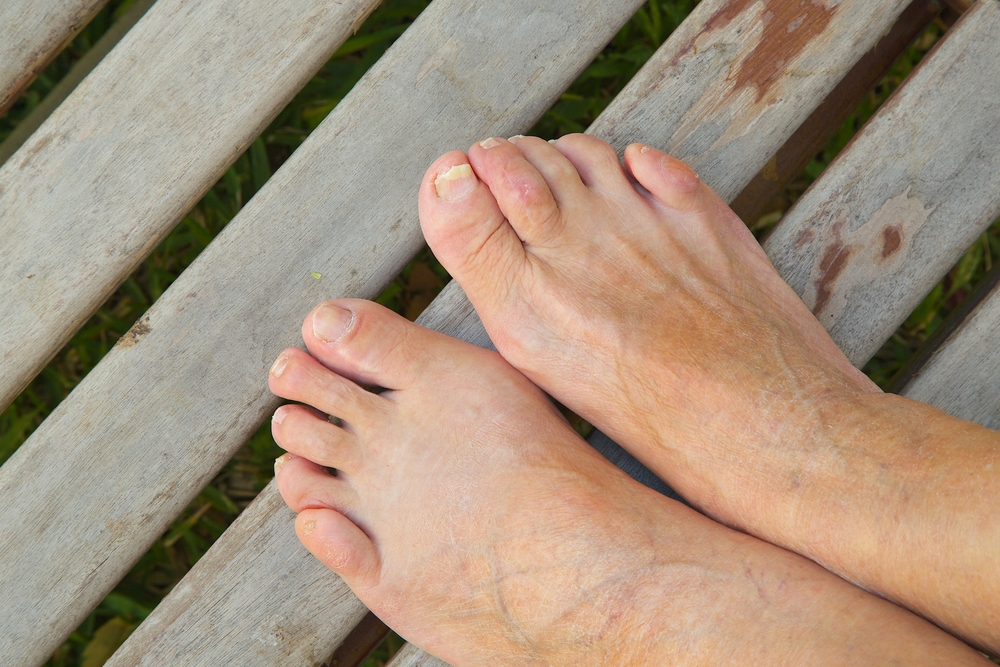
Hammertoe is a particular kind of affliction of the feet which primarily impacts the joints of the toes. An individual living with hammertoe will notice that the joint of their toe sticks up while the rest of the toe points downward. Many patients often confuse this condition with another known as claw toe. Claw toe is different and distinct from hammertoe in that patients with claw toe have unnatural bends in the last two joints of the toe. As a result, the entire toe curls downward. Therefore, hammertoe and claw toe create different shapes in the toes. If you are interested in preventing the onset of these different foot conditions, it is suggested that you contact a podiatrist immediately for any possible advice or treatment.
Hammertoe
Hammertoes can be a painful condition to live with. For more information, contact Dr. Dean D. Hinners from Illinois. Our doctor will answer any of your foot- and ankle-related questions.
Hammertoe is a foot deformity that affects the joints of the second, third, fourth, or fifth toes of your feet. It is a painful foot condition in which these toes curl and arch up, which can often lead to pain when wearing footwear.
Symptoms
- Pain in the affected toes
- Development of corns or calluses due to friction
- Inflammation
- Redness
- Contracture of the toes
Causes
Genetics – People who are genetically predisposed to hammertoe are often more susceptible
Arthritis – Because arthritis affects the joints in your toes, further deformities stemming from arthritis can occur
Trauma – Direct trauma to the toes could potentially lead to hammertoe
Ill-fitting shoes – Undue pressure on the front of the toes from ill-fitting shoes can potentially lead to the development of hammertoe
Treatment
Orthotics – Custom made inserts can be used to help relieve pressure placed on the toes and therefore relieve some of the pain associated with it
Medications – Oral medications such as anti-inflammatories or NSAIDs could be used to treat the pain and inflammation hammertoes causes. Injections of corticosteroids are also sometimes used
Surgery – In more severe cases where the hammertoes have become more rigid, foot surgery is a potential option
If you have any questions please contact one of our offices located in Metropolis and Eldorado, IL . We offer the newest diagnostic and treatment technologies for all your foot and ankle needs.
Ankle Pain and Rheumatoid Arthritis
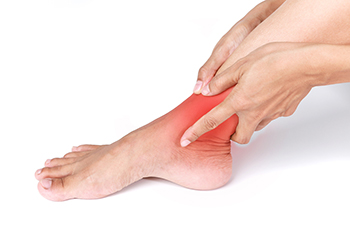
Many people are currently living with a condition known as rheumatoid arthritis, or RA, which is an inflammatory disease that attacks the joints. Individuals who have or are developing rheumatoid arthritis often experience certain symptoms that are highly indicative of the condition. For example, the joints in the body may ache, and more specifically, the ankles may be affected. Sometimes, the aching and pain can be symmetrical in the ankles, which means that both of the ankle joints may ache. Importantly, those whose ankles are affected by rheumatoid arthritis may also experience some amount of swelling in the ankle joints. If you think that you have rheumatoid arthritis and your ankles are being affected, it is suggested that you contact a podiatrist today for an appointment.
Ankle pain can be caused by a number of problems and may be potentially serious. If you have ankle pain, consult with Dr. Dean D. Hinners from Illinois. Our doctor will assess your condition and provide you with quality foot and ankle treatment.
Ankle pain is any condition that causes pain in the ankle. Due to the fact that the ankle consists of tendons, muscles, bones, and ligaments, ankle pain can come from a number of different conditions.
Causes
The most common causes of ankle pain include:
- Types of arthritis (rheumatoid, osteoarthritis, and gout)
- Ankle sprains
- Broken ankles
- Achilles tendinitis
- Achilles tendon rupture
- Stress fractures
- Bursitis
- Tarsal tunnel syndrome
- Plantar fasciitis
Symptoms
Symptoms of ankle injury vary based upon the condition. Pain may include general pain and discomfort, swelling, aching, redness, bruising, burning or stabbing sensations, and/or loss of sensation.
Diagnosis
Due to the wide variety of potential causes of ankle pain, podiatrists will utilize a number of different methods to properly diagnose ankle pain. This can include asking for personal and family medical histories and of any recent injuries. Further diagnosis may include sensation tests, a physical examination, and potentially x-rays or other imaging tests.
Treatment
Just as the range of causes varies widely, so do treatments. Some more common treatments are rest, ice packs, keeping pressure off the foot, orthotics and braces, medication for inflammation and pain, and surgery.
If you have any questions, please feel free to contact one of our offices located in Metropolis and Eldorado, IL . We offer the newest diagnostic and treatment technologies for all your foot care needs.
Various Causes of Ankle Pain
Ankles are joints that connect bones in the feet with bones in the lower leg. They are comprised of bones, ligaments, muscles, tendons, blood vessels, and nerves. The ankle joint allows the foot to move side-to-side, as well as up-and-down.
Ankle pain can be caused by a variety of conditions, but is most commonly due to soft tissue injuries such as ankle sprains and strains.
An ankle sprain occurs when one or more of the strong ligaments that support and stabilize the ankle become overly stretched or even torn if the ankle rolls, turns, or twists awkwardly. Depending on the grade of sprain (mild-moderate-severe), there will be varying degrees of pain, swelling, and restricted range of motion, along with tenderness, bruising, and ankle instability. There may even be an audible popping noise at the moment of injury.
Ankle strains can sometimes produce similar symptoms of pain, swelling, and loss of motion, however, they are due to overly stretched muscles and tendons—not ligaments. Ankle strains may also cause muscle cramps in the feet, calves and shins.
Ankle fractures are another common source of ankle pain and occur one or more of the three bones in the ankle become fractured (broken). These breaks can be stress fractures (due to repetitive stress) or traumatic fractures (due to an acute injury). Depending on where and how severe the fracture is, symptoms can include pain and swelling that can sometimes spread up to the knee, bruising or discoloration, and an inability to bear weight. A visible deformity or exposed bone may occur in severe fractures.
Various forms of arthritis may also cause ankle pain. Rheumatoid arthritis (RA) causes the immune system to attack healthy joints, like the ankle joint, by mistake, causing stiffness and swelling in both ankles. Osteoarthritis occurs when cartilage covering the ends of bones wears down, causing the bones to rub against each other. This results in pain, stiffness, and reduced range of motion in the ankle. Gout is a form of arthritis where excess amounts of uric acid in the bloodstream crystallize and build up on joints, causing severe pain and swelling. Reactive arthritis causes joint pain and swelling in the ankle in response to an infection in another part of the body.
Other forms of ankle pain include bursitis (an inflammation of a cushioning bursa sac between tendons and bone), scleroderma (a thickening of connective tissues), chronic ankle instability (caused by improperly healed ankle sprains), Achilles tendon injuries, flat feet, or an infection in the ankle.
Pediatric Flat Feet
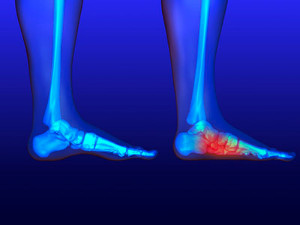
When babies are born, their feet are flat. This means that if you were to place the soles of their feet on the floor, they would be flush with the floor. As the child ages, an arch typically develops. This generally happens by the time they are a teenager. If the arch does not develop, they would continue to have flat feet. While not deemed serious, flat feet can cause discomfort and can make doing everyday activities requiring prolonged standing difficult. Children are active and often play sports, which can cause cramping in the arch and heel areas. Well-fitting and supportive shoes, as well as shoe inserts or orthotics, can provide some relief for flat feet. Rarely will surgery be recommended. If your child has flat feet and they feel pain, it is suggested that you consult with a podiatrist to learn about options for relief.
Flatfoot is a condition many people suffer from. If you have flat feet, contact Dr. Dean D. Hinners from Illinois. Our doctor will treat your foot and ankle needs.
What Are Flat Feet?
Flatfoot is a condition in which the arch of the foot is depressed and the sole of the foot is almost completely in contact with the ground. About 20-30% of the population generally has flat feet because their arches never formed during growth.
Conditions & Problems:
Having flat feet makes it difficult to run or walk because of the stress placed on the ankles.
Alignment – The general alignment of your legs can be disrupted, because the ankles move inward which can cause major discomfort.
Knees – If you have complications with your knees, flat feet can be a contributor to arthritis in that area.
Symptoms
- Pain around the heel or arch area
- Trouble standing on the tip toe
- Swelling around the inside of the ankle
- Flat look to one or both feet
- Having your shoes feel uneven when worn
Treatment
If you are experiencing pain and stress on the foot you may weaken the posterior tibial tendon, which runs around the inside of the ankle.
If you have any questions please feel free to contact one of our offices located in Metropolis and Eldorado, IL . We offer the newest diagnostic and treatment technologies for all your foot and ankle needs.
Treating Corns and Calluses at Home
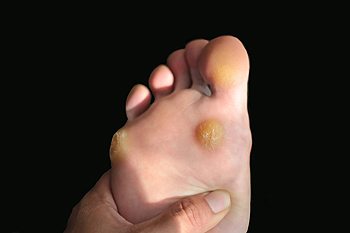 Many people will develop either a corn or callus on their foot at some point in their lives; but what are they? Corns and calluses are areas where the skin has thickened due to constant friction on the area. Corns are smaller and harder than calluses and usually develop on the toes. Calluses, meanwhile, are not usually painful compared to corns and usually occur on the bottom of the foot. Typically, either will go away if the source of friction is taken away. There are some at-home treatments that may help; however, you should consult a podiatrist first to see if they will be effective and appropriate for you. Soaking your feet can soften corns and calluses, as can moisturizers. Over-the-counter pads can help remove both but require caution in their use, as some pads contain salicylic acid—which should be avoided. Finally, one of the most important ways to prevent corns and calluses is to wear fitted and comfortable shoes that prevent friction against the area.
Many people will develop either a corn or callus on their foot at some point in their lives; but what are they? Corns and calluses are areas where the skin has thickened due to constant friction on the area. Corns are smaller and harder than calluses and usually develop on the toes. Calluses, meanwhile, are not usually painful compared to corns and usually occur on the bottom of the foot. Typically, either will go away if the source of friction is taken away. There are some at-home treatments that may help; however, you should consult a podiatrist first to see if they will be effective and appropriate for you. Soaking your feet can soften corns and calluses, as can moisturizers. Over-the-counter pads can help remove both but require caution in their use, as some pads contain salicylic acid—which should be avoided. Finally, one of the most important ways to prevent corns and calluses is to wear fitted and comfortable shoes that prevent friction against the area.
If you have any concerns regarding your feet and ankles, contact Dr. Dean D. Hinners of Illinois. Our doctor will treat your foot and ankle needs.
Corns: What Are They? and How Do You Get Rid of Them?
Corns can be described as areas of the skin that have thickened to the point of becoming painful or irritating. They are often layers and layers of the skin that have become dry and rough, and are normally smaller than calluses.
Ways to Prevent Corns
There are many ways to get rid of painful corns such as wearing:
- Well-fitting socks
- Comfortable shoes that are not tight around your foot
- Shoes that offer support
Treating Corns
Treatment of corns involves removing the dead skin that has built up in the specific area of the foot. Consult with Our doctor to determine the best treatment option for your case of corns.
If you have any questions please feel free to contact one of our offices located in Metropolis and Eldorado, IL . We offer the newest diagnostic and treatment technologies for all your foot and ankle needs.
Swollen Feet During Pregnancy is Natural
 Despite weight gain being a natural occurrence during pregnancy, many women often notice abnormal swelling in their feet. This is partially due to women experiencing a change in their center of gravity, which may prompt a difference in standing and walking. The feet can enlarge and should be measured regularly, so the correct shoe size can be worn for maximum comfort. This may prevent certain uncomfortable foot conditions from occurring such as ingrown toenails, and it can prevent an existing case of bunions from becoming worse. There may be several ways to control unwanted swollen feet. Many women may find relief by elevating their feet frequently, practicing a healthy lifestyle that includes consuming foods with a lower sodium content, and exercising regularly. Additionally, wearing comfortable shoes may aid in providing additional support for the feet and general health of the body. If you would like additional information about how pregnancy affects the feet, please consult with a podiatrist.
Despite weight gain being a natural occurrence during pregnancy, many women often notice abnormal swelling in their feet. This is partially due to women experiencing a change in their center of gravity, which may prompt a difference in standing and walking. The feet can enlarge and should be measured regularly, so the correct shoe size can be worn for maximum comfort. This may prevent certain uncomfortable foot conditions from occurring such as ingrown toenails, and it can prevent an existing case of bunions from becoming worse. There may be several ways to control unwanted swollen feet. Many women may find relief by elevating their feet frequently, practicing a healthy lifestyle that includes consuming foods with a lower sodium content, and exercising regularly. Additionally, wearing comfortable shoes may aid in providing additional support for the feet and general health of the body. If you would like additional information about how pregnancy affects the feet, please consult with a podiatrist.
Pregnant women with swollen feet can be treated with a variety of different methods that are readily available. For more information about other cures for swollen feet during pregnancy, consult with Dr. Dean D. Hinners from Illinois. Our doctor will attend to all of your foot and ankle needs.
What Foot Problems Can Arise During Pregnancy?
One problem that can occur is overpronation, which occurs when the arch of the foot flattens and tends to roll inward. This can cause pain and discomfort in your heels while you’re walking or even just standing up, trying to support your baby.
Another problem is edema, or swelling in the extremities. This often affects the feet during pregnancy but tends to occur in the later stages.
How Can I Keep My Feet Healthy During Pregnancy?
- Wearing orthotics can provide extra support for the feet and help distribute weight evenly
- Minimize the amount of time spent walking barefoot
- Wear shoes with good arch support
- Wear shoes that allow for good circulation to the feet
- Elevate feet if you experience swelling
- Massage your feet
- Get regular, light exercise, such as walking, to promote blood circulation to the feet
If you have any questions please feel free to contact one of our offices located in Metropolis and Eldorado, IL . We offer the newest diagnostic and treatment technologies for all your foot and ankle needs.
Stress Fractures in the Feet
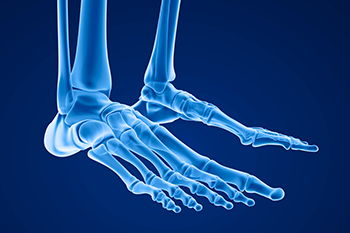
Many runners, dancers, and other athletes develop stress fractures in the feet. This injury occurs when the force on the bone is greater than its ability to adapt. The result is a hairline crack in the bone. The most common location of stress fractures in the feet is the metatarsal bones. These are the long bones of the feet that connect the toes to the midfoot. The 2nd and 3rd metatarsals are most often affected, accounting for a third of stress fractures in feet and ankles. The heel bone, called the calcaneus, is the second most common location of foot stress fractures. Stress fractures are often the result of overtraining, such as increasing running speed, distance, or intensity too quickly. One of the main problems of developing stress fractures is the difficulty in diagnosing them. They are hard to detect through X-rays and can easily be thought of simply as sore feet, at first. To see if you have developed stress fractures, it is suggested that you make an appointment with a podiatrist for a complete exam and diagnosis.
Activities where too much pressure is put on the feet can cause stress fractures. To learn more, contact Dr. Dean D. Hinners from Illinois. Our doctor can provide the care you need to keep your pain free and on your feet.
Dealing with Stress Fractures of the Foot and Ankle
Stress fractures occur in the foot and ankle when muscles in these areas weaken from too much or too little use. The feet and ankles then lose support when walking or running from the impact of the ground. Since there is no protection, the bones receive the full impact of each step. Stress on the feet can cause cracks to form in the bones, thus creating stress fractures.
What Are Stress Fractures?
Stress fractures occur frequently in individuals whose daily activities cause great impact on the feet and ankles. Stress factors are most common among:
- Runners
- People affected with Osteoporosis
- Tennis or basketball players
- Gymnasts
- High impact workouts
Symptoms
Pain from the fractures occur in the area of the fractures and can be constant or intermittent. It will often cause sharp or dull pain with swelling and tenderness. Engaging in any kind of activity which involves high impact will aggravate pain.
If you have any questions please feel free to contact one of our offices located in Metropolis and Eldorado, IL . We offer the newest diagnostic and treatment technologies for all your foot and ankle needs.
Removing Corns and Calluses
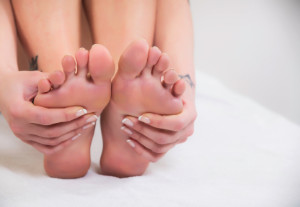 Among foot conditions, corns and calluses are often seen as some of the more harmless concerns. Regardless, if either condition does become troublesome, there are methods available for removal. Because calluses are essentially small areas of thick, hardened skin, softening them can help aid in their removal. Soaking the feet in warm water and avoiding using harsh soaps while washing can help maintain softness of the skin. Hard areas can also be buffed away using a pumice stone. If you are suffering from corns or calluses and seek ways to remove them, consult with your podiatrist.
Among foot conditions, corns and calluses are often seen as some of the more harmless concerns. Regardless, if either condition does become troublesome, there are methods available for removal. Because calluses are essentially small areas of thick, hardened skin, softening them can help aid in their removal. Soaking the feet in warm water and avoiding using harsh soaps while washing can help maintain softness of the skin. Hard areas can also be buffed away using a pumice stone. If you are suffering from corns or calluses and seek ways to remove them, consult with your podiatrist.
If you have any concerns regarding your feet and ankles, contact Dr. Dean D. Hinners of Illinois. Our doctor will treat your foot and ankle needs.
Corns: What Are They? and How Do You Get Rid of Them?
Corns can be described as areas of the skin that have thickened to the point of becoming painful or irritating. They are often layers and layers of the skin that have become dry and rough, and are normally smaller than calluses.
Ways to Prevent Corns
There are many ways to get rid of painful corns such as wearing:
- Well-fitting socks
- Comfortable shoes that are not tight around your foot
- Shoes that offer support
Treating Corns
Treatment of corns involves removing the dead skin that has built up in the specific area of the foot. Consult with Our doctor to determine the best treatment option for your case of corns.
If you have any questions please feel free to contact one of our offices located in Metropolis and Eldorado, IL . We offer the newest diagnostic and treatment technologies for all your foot and ankle needs.

